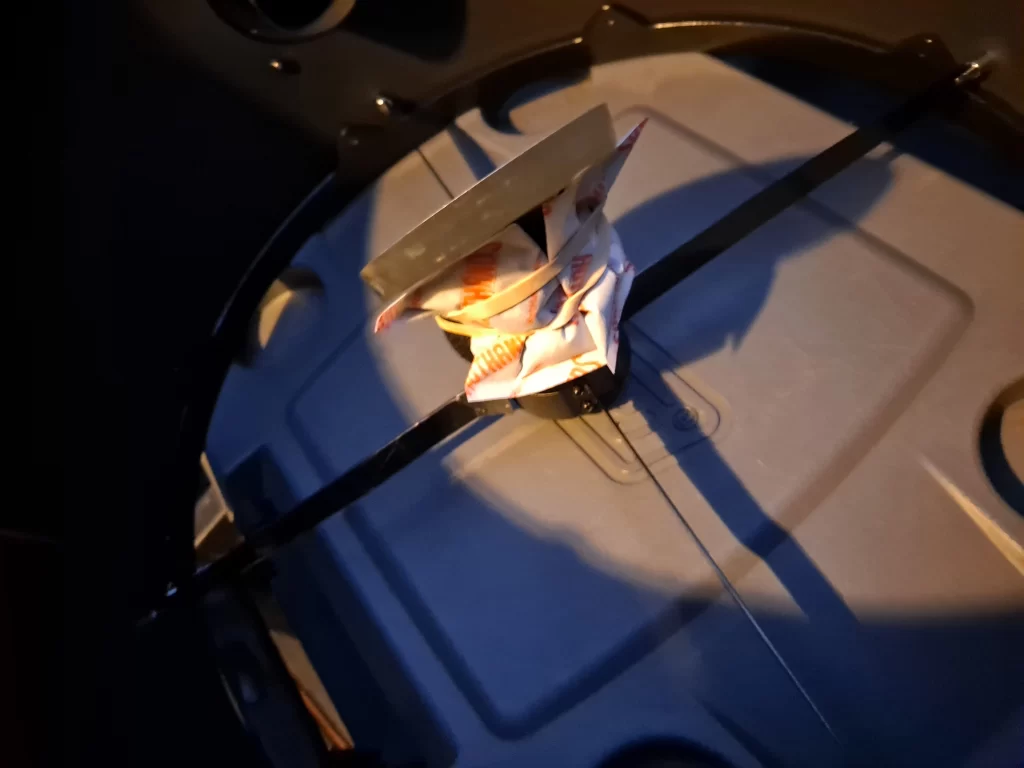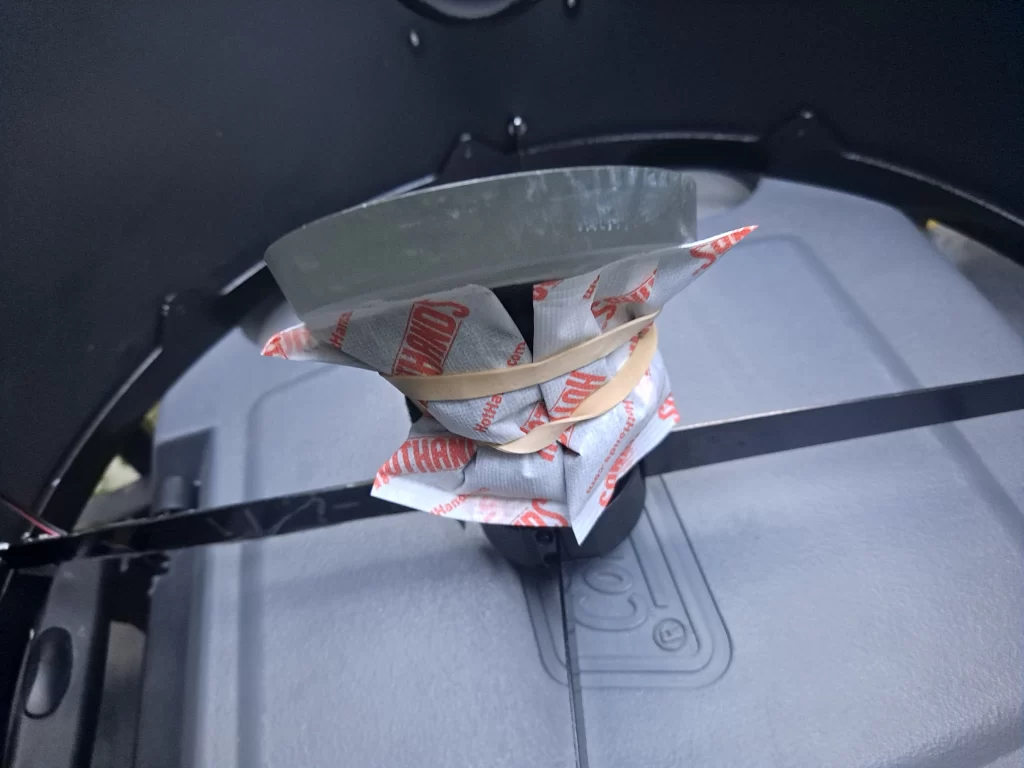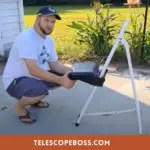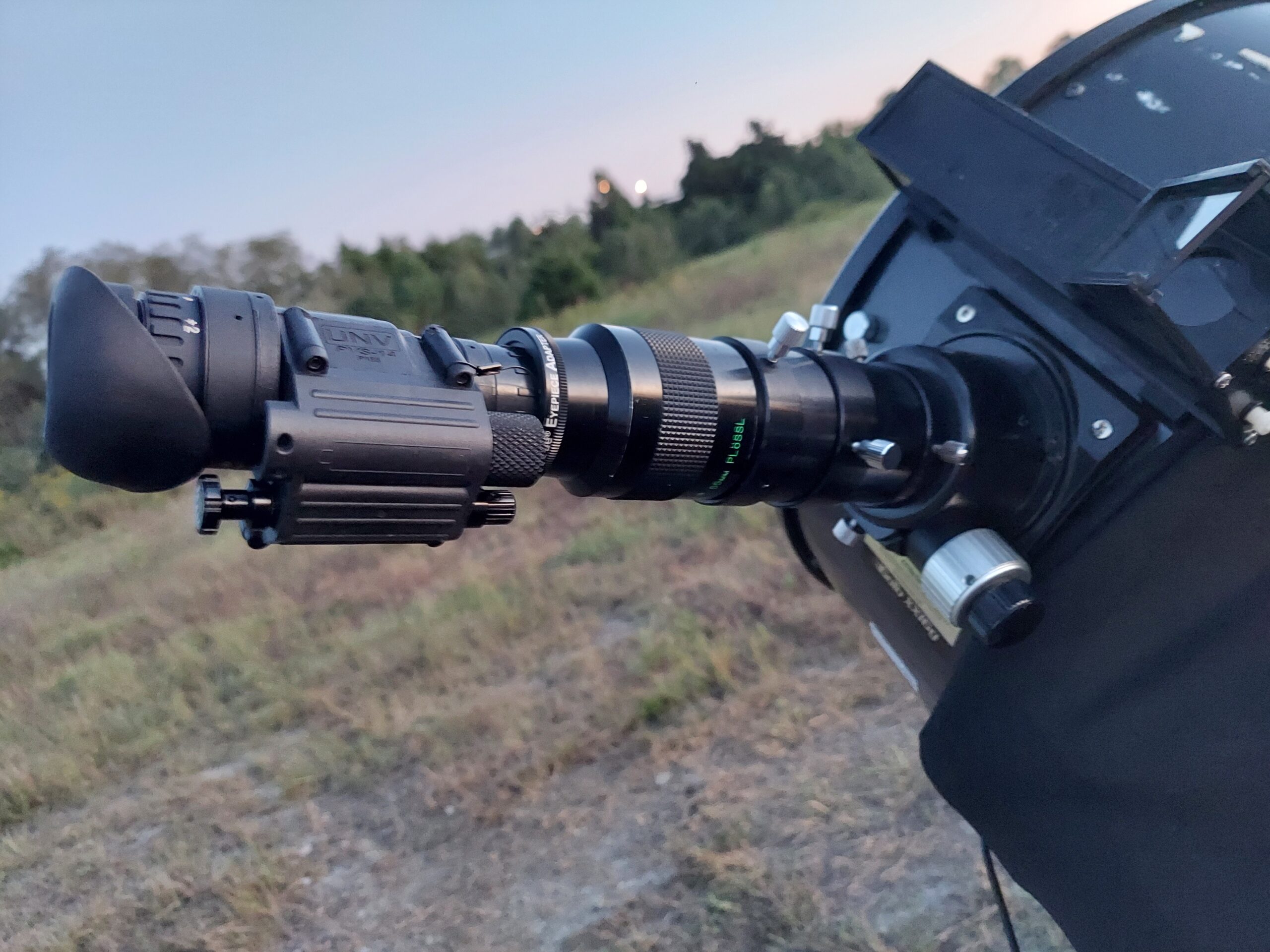A dew heater may not have been on your original shopping list. If you find that you need a way to control dew on your new scope you may want to try Hot Hands.
Hot Hands are packets of chemicals that emit heat when exposed to air. They heat to temperatures around 130 degrees fahrenheit. They maintain their heat for up to ten hours.
Dew heaters heat to various temperatures, but tend to max out around 122 degrees.
This information makes it seem like Hot Hands would be a great substitute for real dew straps.
Hot Hands can be used to warm up a secondary mirror if you do not have a dew heater and the temperature is very close to the dew point. This is a very poor way to heat the mirror, but if you have no other option it may help keep the mirror clear for a few hours. This may be your best solution if you have no power at your observing location.
They do not create a complete seal or warm the mirror evenly.
I did a quick experiment on my front porch the other morning to try to show the effectiveness of hand warmers on a secondary mirror.
I brought my secondary mirror outside when the temperature and dew point were both 46. I only kept them out for less than an hour. There was no condensation on anything, so I am not sure if the hand warmers are what did it, or if it was morning conditions, but I count it a failed experiment.
This was a bad experiment because before you use any dew control you should let your scope acclimate.
Weather conditions do not always indicate a need for dew control.

Will Hot Hands work as dew control?
In my experience they work very poorly. We live in Virginia where we reach 100% humidity, and active dew control is really essential. I have tried it twice, and it really did not work.
A lot of my astronomy friends who hate wires use this method, and they have success. I think that it really depends on your particular weather conditions.
If you do not have any other option for dew control, try hot hands, rubber band attached to your secondary mirror, but give them plenty of time to heat up before attached them.
Be sure that you really need a dew heater before trying hot hands. Your scope might just need more time to acclimate. What you think is dew might just be condensation that will resolve itself with time.
Check your cooling fans, if they are not working well, they may be slowing down the acclimation process.
Know that using Hot Hands on your telescope is a pretty controversial practice. Some people question the safety of putting those chemicals close to such a delicate scientific instrument.
Some people say that over time heating the glue behind your secondary mirror can cause it to fail and fall off.
We emailed R-Sky and asked about the concept of the glue melting on the back of a secondary mirror. Roland assured us that he has never heard of that happening. He said that you would notice a problem way before your mirror fell off.
How can I attach Hot Hands to my Telescope?
If you have a Dobsonian Telescope, you can attach the Hot Hands with a rubber band. Be sure that they are not obstructing the view at all.
This is a bit of a delicate operation and you need to do your best not to touch the secondary mirror. Smudges there can really impact your views. Some people really recommend that you do not clean your mirrors. They will tell you that you are damaging the special coatings that have been applied.
If you are hoping to use Hot Hands to warm eyepieces, keep them in a cooler with a towel and a few hot hands. This creates a warming box. Then keep the eyepieces warm over the course of your observing session.
I have tried this and I found that the build up of condensation was too much to make this a useful method.
You can also wrap Hot Hands around an eyepiece with rubber bands, just be sure to wrap them completely around the eyepiece with no gaps. If there are gaps you will get fogginess in the eyepiece.

When To Buy a Dew Heater
If you are noticing dew on your optical surfaces after you have given your telescope an hour or more to acclimate to the ambient temperate, then you need some kind of dew control.
This might be a problem that you did not anticipate. Hand warmers are not the ideal solution, because the heat escapes in all directions, the shape and size is not ideal for this application, and they need to be purchased again and again.
The heat from hand warmers is not standardized, and it changes through the night. When the wind blows you will lose heat. This uncontrolled temperature will be uneven at best and damaging at worst.
Dew heaters or dew straps cost between $30 and $70 for the heater and over $100 for the controller. You will also need a power source, which adds significant complexity to your set up and can be very expensive.
Dew heaters can be purchased from companies like R-Sky , Dew Not, Astro Zap and Thousand Oaks, but there are a few on Amazon with decent reviews as well.
I recommend that you start with a solid plan for acclimating your scope. Have an observing location at high elevation and a solid cooling fan. Be sure that you are dealing with dew and not condensation.
If you cannot resolve your dew issues with these practices, invest in an active dew control system. In my area it is impossible to observe without one.
A secondary mirror heater and two dew straps are a great start and should cover almost all your bases. If you have a telrad or finderscope I would not prioritize these, just grab some KIM Wipes to keep these clear when you need them.
I chose to upgrade my system recently and I reviewed the products I am currently using in this video on my YouTube chanel.
I found R-Sky’s controller too flimsy and it did break on me. I kept losing connection with the power source, and I had to continually check to see if the warmer was still warm.
I am glad to have upgraded to the Thousand Oaks controller and I look forward to clear skies.





